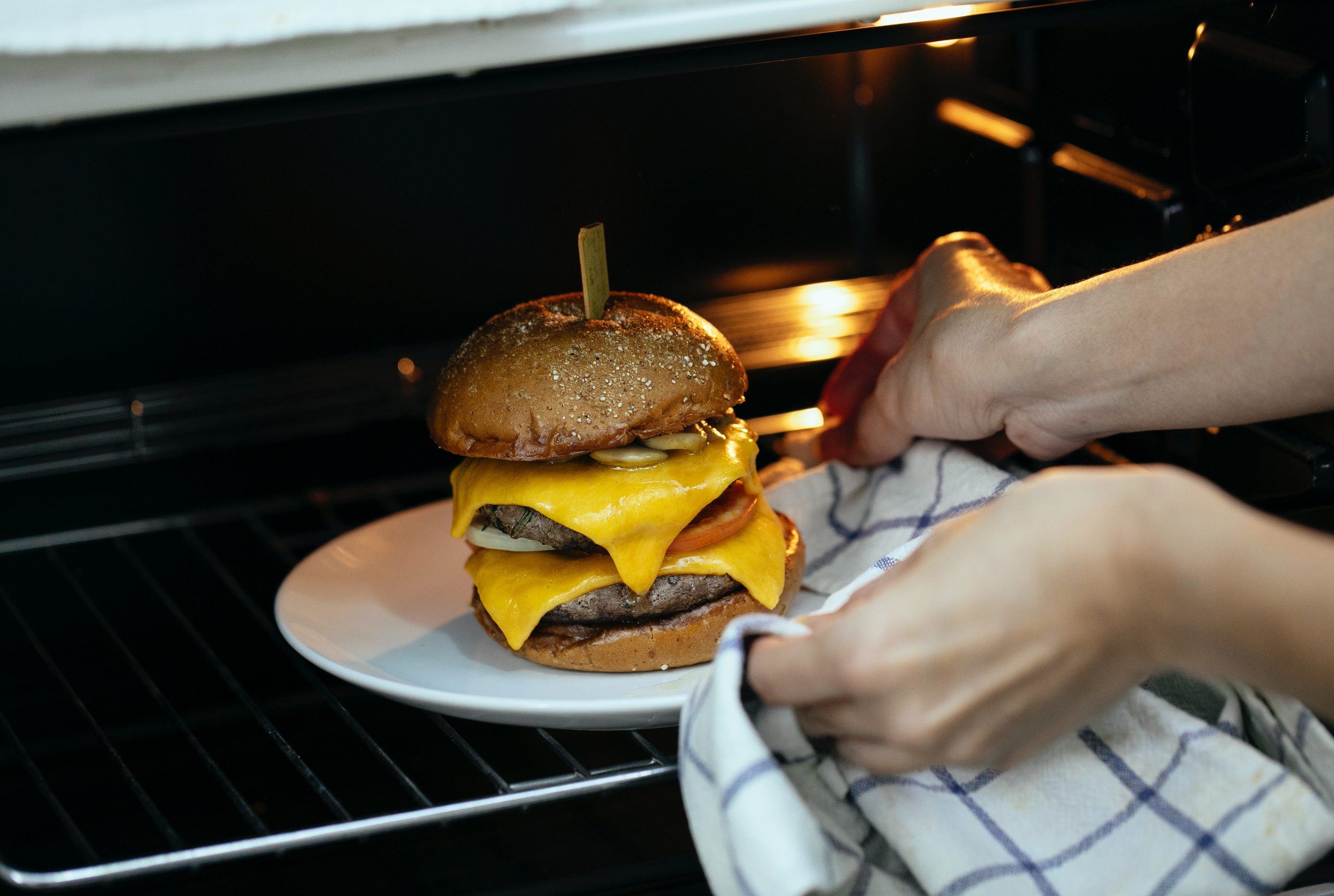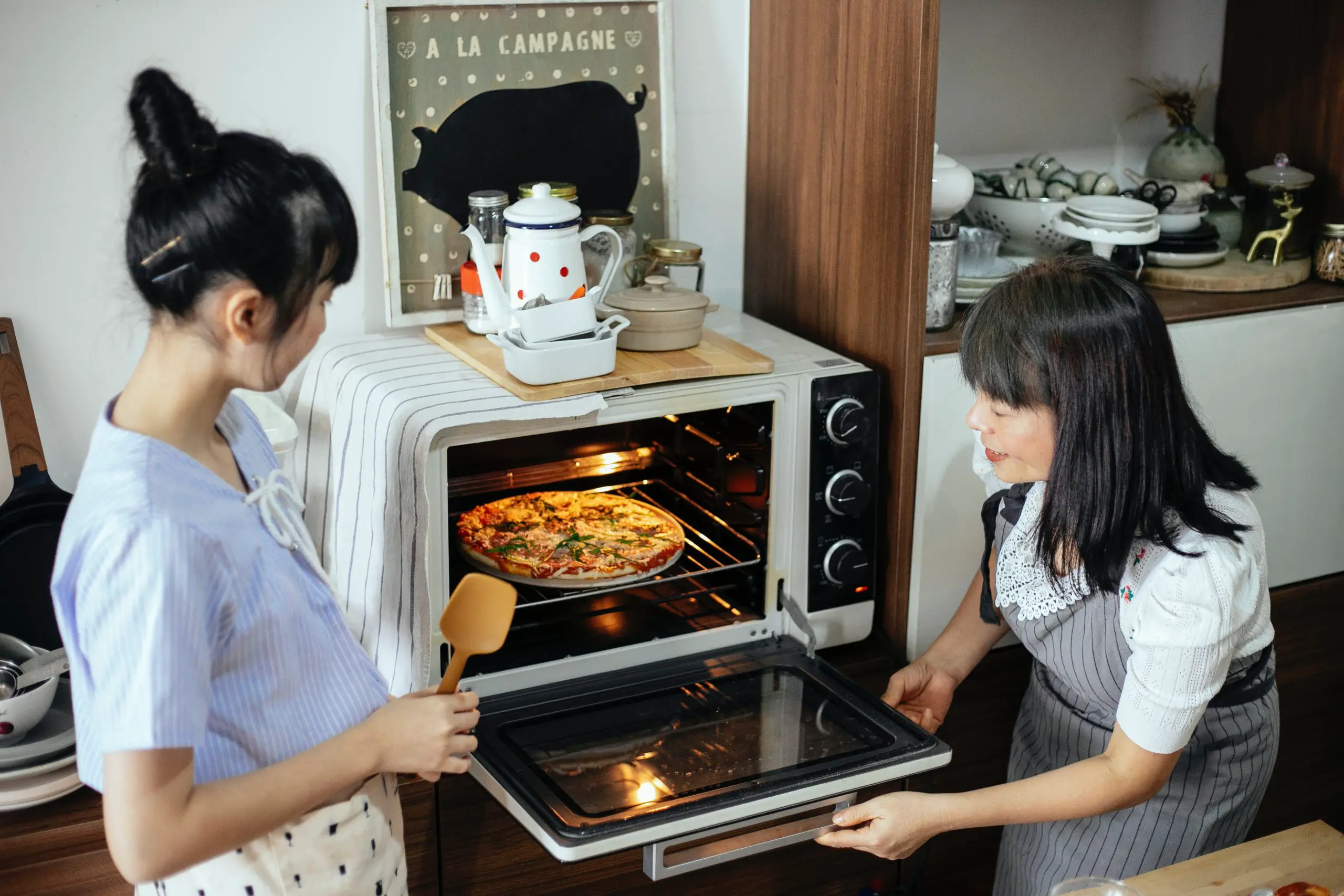Reheating leftovers decreases waste while also saving time and money. If you prepare meals in large quantities, it is a necessary activity. However, leftovers can result in food poisoning if they aren’t heated through correctly, endangering your health.
Food poisoning affects 1 in 6 Americans yearly, and 128,000 cases result in hospitalisation. Food poisoning can, in extreme circumstances, result in death. Additionally, some warming techniques might make some leftovers far less tasty to consume.
Instructions for reheating leftovers delightfully and safely are provided in this article.

How to Reheat Food in the Oven?
Generally, reheat Food in the same manner as when it was first prepared. For instance, the soup should be heated in a pot on the stovetop, whereas a roast bird should be heated in the oven.
You might need to cover things like roast meats and casseroles with aluminium foil to prevent them from drying out while reheating. Even if the reheating time varies based on the meal, you should use low heat and cook the Food for at least two minutes at 70°C to ensure it is well heated.
The common misconception that preheating the oven is not required for reheating meals is disputed. Make careful to reheat Food slowly and with foil if you want to keep the right amount of moisture in it. If possible, stir after a while. If the container is straight from the fridge, letting the leftovers warm up next to your oven can be helpful.
1. Steak
The most frequent beef with reheated steak is that the flesh is rubbery, dried out, or bland. But some warming techniques keep flavour and moisture.
Remember that leftover meat usually tastes better when cooked at room temperature, so remove it from the refrigerator and let it sit out for approximately 10 minutes before warming.
Instructions
The best way to reheat steak to keep it soft and tasty is to do it this way if you have the time.
- Preheat the oven to 250°F (120°C).
- Set the steak on the wire rack inside the baking pan. This makes it possible for the meat to cook evenly on both sides.
- After the oven has heated up, place the steak inside and cook for 20 to 30 minutes while checking on it frequently. The time needed to cook a steak depends on its thickness.
- The steak is done when the middle is warm (100-110°F or 37-43°C) but not scorching hot.
Serve with steak sauce or gravy. Alternately, sear the steak on each side in a pan with butter or oil for a crispy texture.
2. Chicken and Red Meat
Chicken and red meat that has been reheated frequently get dried up and rough. Generally speaking, it’s preferable to reheat meat using the same cooking technique.
Chicken and other red meat can still be safely reheated without drying out your Food.
Instructions
The most time-consuming procedure but the greatest choice for moist, luscious leftovers.
- Your oven should be set at 250°F (120°C).
- Place the meat on a baking sheet, then add butter or oil. To keep it from drying out, wrap it in aluminium foil.
- Using this technique typically takes 10 to 15 minutes—the type and quantity of meat will determine how long it takes, though.
- Before serving, make sure the meat has been roasted fully.
3. Fish
Like meat, fish can be reheated. However, the overall flavour of the fillet is significantly influenced by its thickness. Salmon steaks are an example of a fish cut that retains texture and flavour better than a thinner one.
Instruction
This is a good choice for preserving flavour and moisture. It does, however, take more time.
- Your oven should be set at 250°F (120°C).
- Wrap the fish in foil and set it on a baking sheet if it hasn’t been breaded or battered.
- Cook the centre until it is steaming hot, about 15-20 minutes.
4. Rice
If handled or heated improperly, rice, especially reheated rice, poses a danger of food poisoning.
Rice that isn’t cooked may have Bacillus cereus spores, which can make you sick. Surprisingly heat-resistant, these spores frequently endure cooking.
Rice can be reheated without harm, although it should never be done after being exposed to room temperature for a long time.
Rice should ideally be served as soon as it is finished cooking, cooled within an hour, and then refrigerated for no more than a few days before reheating.
Here are a few effective methods for warming rice.
Instructions
If a microwave is unavailable, warming rice in the oven is a decent alternative, even though it takes longer.
- Place the rice and water in an oven-safe dish.
- Butter or oil can improve flavour while preventing sticking.
- If the rice is stuck together, separate it with a fork.
- Use aluminium foil or a good lid to cover.
- Cook for 15-20 minutes until heated at 300°F (150°C).
5. Pizza
Reheating pizza frequently leads to a mushy, cheesy disaster. Here’s how to properly reheat pizza to retain its flavour and crispiness.
Instructions
Once more, this approach requires the greatest time. But you can count on getting a hot, crispy leftover pizza.
- The oven temperature is set to 375°F (190°C).
- Heat a baking tray lined with foil in the oven for a few minutes.
- Place the pizza on the hot baking sheet with care.
- Bake for about 10 minutes, checking to ensure it doesn’t burn along the way.
6. Casseroles and One-Pot Meals
Casseroles and one-pot meals, such as stir-fried, sautéed, or steamed vegetables, are simple to prepare and excellent for batch cooking. They are also simple to reheat.
When reheating foods in the oven, covering a casserole can help ensure the juiciness of the dish while keeping the outside from burning. Casseroles with a cheesy topping are particularly important to cover. Covering the casserole halfway during cooking will ensure the cheesy topping melts and browns. In most cases, covering a casserole halfway will be enough to keep the Food warm.
Instructions
However, it is not the ideal choice for anything that is stir-fried, sautéed, or steamed.
- The oven should be heated to 200–250°F (90–120°C).
- To keep the moisture in the leftovers, put them in an oven-safe dish and wrap them in aluminium foil.
- Depending on the leftovers, reheating time will vary.
Low and Slow Method for Reheating in the Oven
If you have leftovers, you might wonder how to reheat Food in the oven. This method is excellent for meat and fish that have not reached their ideal doneness. The oven maintains a consistent temperature throughout the cooking process, so Food will be more evenly heated and won’t become overcooked or soggy. However, the temperature must be low enough to prevent the Food from becoming soggy.
When reheating Food, use the low and slow methods. Never try to reheat your Food in a microwave, broiler, or oven to 165 degrees. Two options are available if you must reheat your Food in an oven. First, you can use a dish or a bowl. Second, you can use the reheat program. In either case, use the correct cooking time and temperature.
Is it Possible to Reheat Food More than Once?
Ideally, Food should be consumed right away after it has been prepared. It will most likely be the freshest and taste the finest at this time. Food should be reheated until it reaches a minimum temperature of 75 °C. Set the oven to heat according to the recipe’s original directions. A household oven normally ranges from 160 °C to 220 °C, depending on the Food. Avoid reheating meals more than once because they lose some flavour and nutritional value. Any leftover food should be thrown away after it has been reheated and served.
To What Degree should Meals be Reheated?
It’s essential to reheat your meal until it’s boiling through to lower the chance of contamination and guarantee that all dangerous bacteria are killed. You should get help if you are more used to ensuring that your meal has been fully reheated. Insert the instant-read probe into the area of the Food that is the thickest to eliminate all doubt.
Food should be cooked for at least two minutes until it reaches 70°C, according to the UK’s Food Standard Agency. Additionally, you can cook meals for 45 minutes at 60 degrees and 10 minutes at 65 degrees.
Avoid Heating Meat to 165 Degrees
USDA recommends that poultry products be cooked to 165 degrees. While it may seem unnecessary to cook meat to that temperature, it is necessary to ensure it is cooked properly. Unless the poultry is carefully stored, bacteria can grow and cause food poisoning. Moreover, the higher the temperature, the greater the kill rate of bacteria in the meat. This temperature is also necessary for safety reasons: undercooking meat can result in food poisoning.
What Meals should you Avoid Reheating?
Food stored for more than two days or kept at room temperature for more than two hours should never be reheated. The leftovers from the freezer should be properly defrosted and reheated within 24 hours,
How Long does it Take the Oven to Reheat Food?
Cover items like casseroles and roast meats with foil to prevent them from drying out while reheating in the oven. Use low heat, such as 350 degrees Fahrenheit, and cook the Food until it is barely heated through, which could take anywhere from 8 to 20 minutes, depending on the item.
Should I Preheat the Oven Before Reheating?
Preheating your oven may ensure that your Food spends the shortest amount of time possible in the danger zone, going from frigid to blistering hot. While this period is little, keep in mind that some bacteria can grow exponentially in the danger zone in as little as 20 minutes.
Why Avoid Heating Food in a Microwave or Broiler?
Microwaves don’t kill bacteria as an oven does, so Food reheated this way may carry a greater risk of causing a serious health hazard. To avoid this, follow the recommended cooking times for different types of Food. Foods that have been in the microwave for several hours may still carry the risk of salmonella and other harmful pathogens. Following a few simple guidelines, however, will prevent food-borne illnesses.
When reheating Food in the oven, place smaller pans away from the heating element than larger ones. You can also keep the top broiler compartment slightly ajar. The broiler should be turned on just before the Food is ready. Follow the preheat guide provided by your oven. Lastly, don’t forget to watch the Food closely to avoid burning it.
The use of low power has enhanced microwave oven technology. Studies have found that low-power microwave cooking retains nutrients like thiamin, riboflavin, pyridoxine, folacin, ascorbic acid, and conventional, reheated meals. Regarding sensory quality, beef roasts cooked in a microwave at “simmer” were on par with roasts cooked traditionally. However, vegetables cooked in an institutional (1,150 w) microwave were superior to those cooked in a home (550 w) microwave.
Reference: Effects of microwave cooking/reheating on nutrients and food systems: A review of recent studies
Conclusion
When handled properly, leftovers are both convenient and safe. If you frequently prepare meals in advance or make large quantities of Food, you might consume a lot of leftovers. You may enjoy leftovers without worrying about becoming sick by ensuring they are rapidly cooled, kept properly, and fully reheated.
The best way to reheat Food is usually in the microwave, even though it preserves the most nutrients. Reheating leftovers in the same manner as when they were first prepared usually results in the best flavour. With these pointers, you can satisfactorily eat more of any delectable meal.

